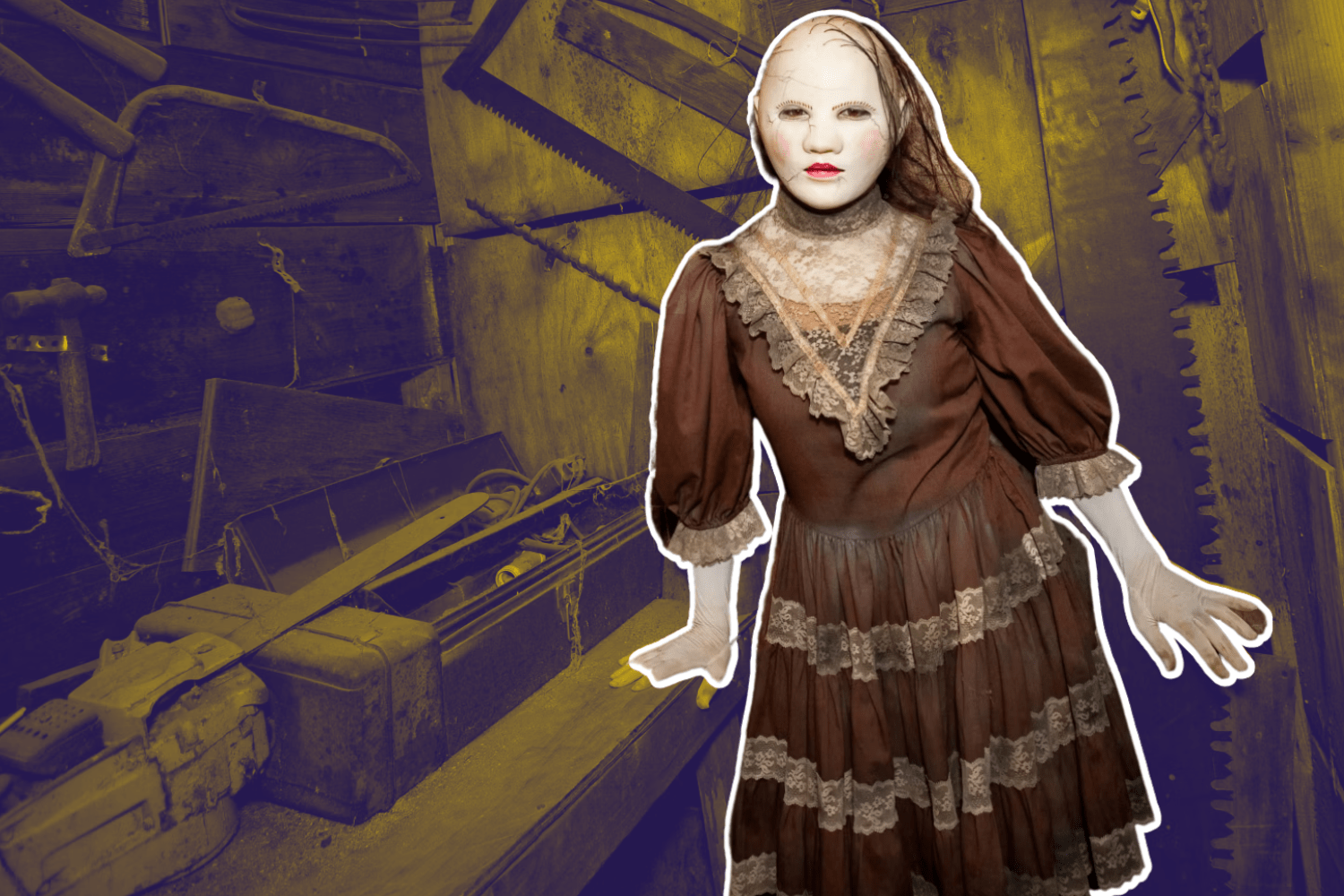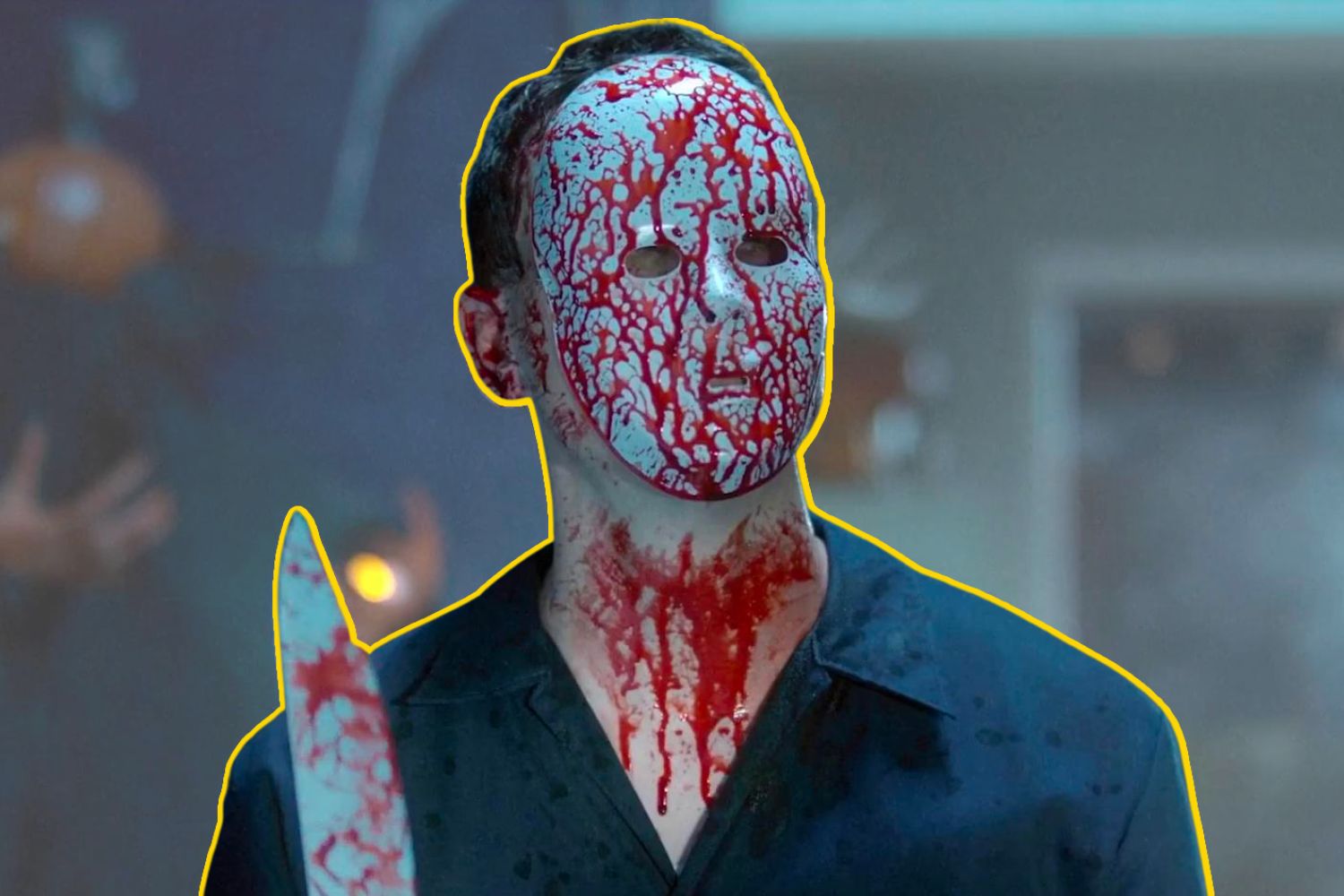Editorials
Thrill-Seeking and Self-Destruction in ‘The Houses October Built’
June 22nd, 2022 | By Melanie Moyer

The thesis of The Houses October Built is simple: be careful what you wish for. But through its conceit as a found footage film, the realistic home-video slow burn of events, and seamless blending of real-world locations, it becomes less a Greek tragedy of a group of haunters who flew too close to the sun and more of a study in thrill-seeking. Every single point of escalation comes as the result of a choice our characters make: to peel the paint back further, dig deeper, and eventually cross the dark event horizon that exists in the underground world of extreme haunted attractions. Bobby Roe’s directorial debut is a heart-warming homage to the art and edifice of the haunted house world, tackling the paradoxical and sometimes troubling nature of our relationship with being willfully scared.
The film follows Jeff (Jeff Larson), his brother Zack (Zack Andrews), Zack’s girlfriend Brandy (Brandy Schaefer), and their friend Bobby (Bobby Roe) on a road trip across the country. They’re documenting their way through haunted houses in search of a word-of-mouth extreme haunt called Blue Skeleton. As they make their way through more haunts and ask more questions, Blue Skeleton eventually finds them.
The modern haunted attraction – the film’s opening scenes claim there are over 2,500 nationwide – was a product of the Great Depression. The restless youth of the poverty-stricken 1930s found an outlet on Halloween through vandalism, thanks in part to the holiday’s conflation with Guy Fawkes Night on November 5th. The commercial evolution of the haunted attraction is thanks in large part to The Haunted Mansion’s 1960s debut. The attraction welcomed over 82,000 visitors on its opening day, whetting the country’s appetite for a new kind of experience. At the same time, famous slasher prototype films created a repeatable template for both horror films and subsequent haunted houses to follow suit with.
But our horror tastes, both on-screen and in haunted attractions, seem to have a certain exponentiality. Compare pre-code films both censored and besmirched for all their “scandalous” elements (such as women showing skin, morally ambiguous and violent protagonists, and deliberately provocative titles) with what lands a simple PG-13 rating today. As Jeff says in the film’s early minutes: “Going through haunted houses, you didn’t know who was real or not, right? The element, what that feels like, I want to find it again.”
Haunted attractions offer a unique balance of theatrical entertainment and immersive activity. We both watch the scenes and participate in them. Found footage works much the same way. It prevents the audience from being passive in the experience of the characters and when done right, can make the characters’ terror our own. So it only makes sense that a film about haunted houses requires the found footage angle, forcing the audience into the camera’s lens to play witness to self-destruction. But, like the characters in The Houses October Built, we chose to be there. And even though we understand this is fiction, simply by watching the film we’re accepting the conceit that it is real in order to engage with the story. And that maybe a part of us wants it to be real.
For the characters, the realistic experience they chase is Blue Skeleton and the thrill they get from blurring the line between entertainment and actual kidnapping. In real life, that pursuit of more realistic experiences leads to attractions like Blackout and McKamey Manor. The former is the most famous pioneer of the extreme haunt, and the latter has tested waivers and legal loopholes for haunted attractions to their limits.
The experience at McKamey Manor greatly resembles Blue Skeleton. The attraction starts with a simulated kidnapping similar to the film’s opening sequence and forces guests through a series of torturous scenes that included hair cutting, water torture, live animals, exposure to bodily fluids, and other distasteful events. The Manor does not allow for use of a safe word, and films guests as they go through the experience, resulting in disturbing marketing material that resembles a snuff film. At least one person went to the hospital and several have offered anecdotal accounts of their physical and mental injuries.
Should this kind of attraction be allowed to exist? Haunted attractions are no strangers to litigation. A deadly fire in 1984 at a New Jersey attraction resulted in the first major regulation of how the rides were operated. And as recently as 2011, a California man sued an attraction after injuring himself while running out of the exit (“They just love to run you out of those places with chainsaws,” as Brandy says). But McKamey Manor has managed to dodge any major attempts at lawsuits (though they have been once or twice temporarily shut down thanks to local ordinances and codes). The question The Houses October Built is most interested in answering is why someone would seek out these situations at all and, further, why we as the audience want to watch it happen.
Throughout the road trip, Jeff and Zack ask different attraction employees to confirm or deny the truth behind urban legends: that ex-convicts worked in the attractions, that some props were actual human body parts, that unsavory things happen in the dark. They ask because they want it to be true. And we do too. Even at the climax, when the group has been blindfolded inside a bus and taken to Blue Skeleton’s current location, they can’t let go of the excitable thrills. The film does a perfect job of selling the chilling nature of this entire sequence. After 90 minutes of feeling like a home movie (a slow-burn that some critics maligned), the kidnapping and final sequence is just as realistic, just as believable as earlier scenes of the group around a campfire and awkward b-roll shots.
The film’s ending hits a wonderfully ominous note. As some characters appear to be killed and others buried alive, we still don’t know fully if Blue Skeleton was real or not. And that’s part of what makes this one of the more well-done additions to the found footage canon since The Blair Witch Project, a film whose entire marketing and longevity was built on the uncertainty of whether or not it showed true events. The Houses October Built is harkening back to that feeling and asking, why was that so important to us? It’s a film that is aware that the staying power of found-footage is in our ability to pretend, however briefly, that we’re watching something true happen. While the movie’s sequel provides some literal answers as to what exactly happened at the end of this movie, the question that The Houses October Built asks remains: do you want it to be real? And whatever the answer is, why?


